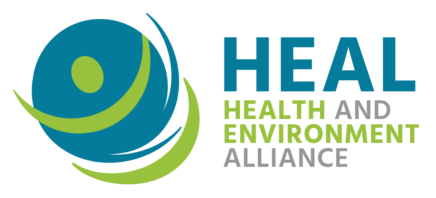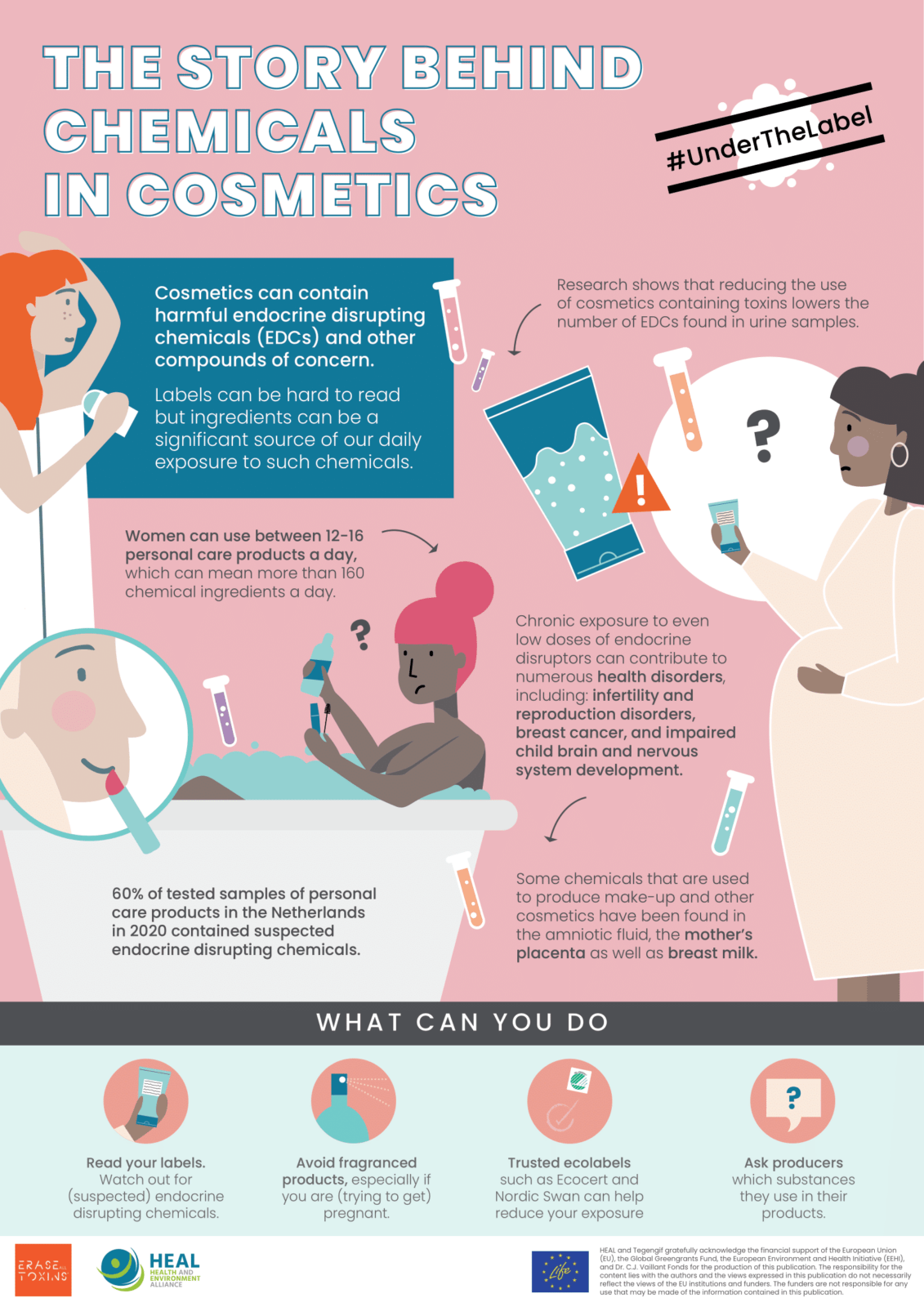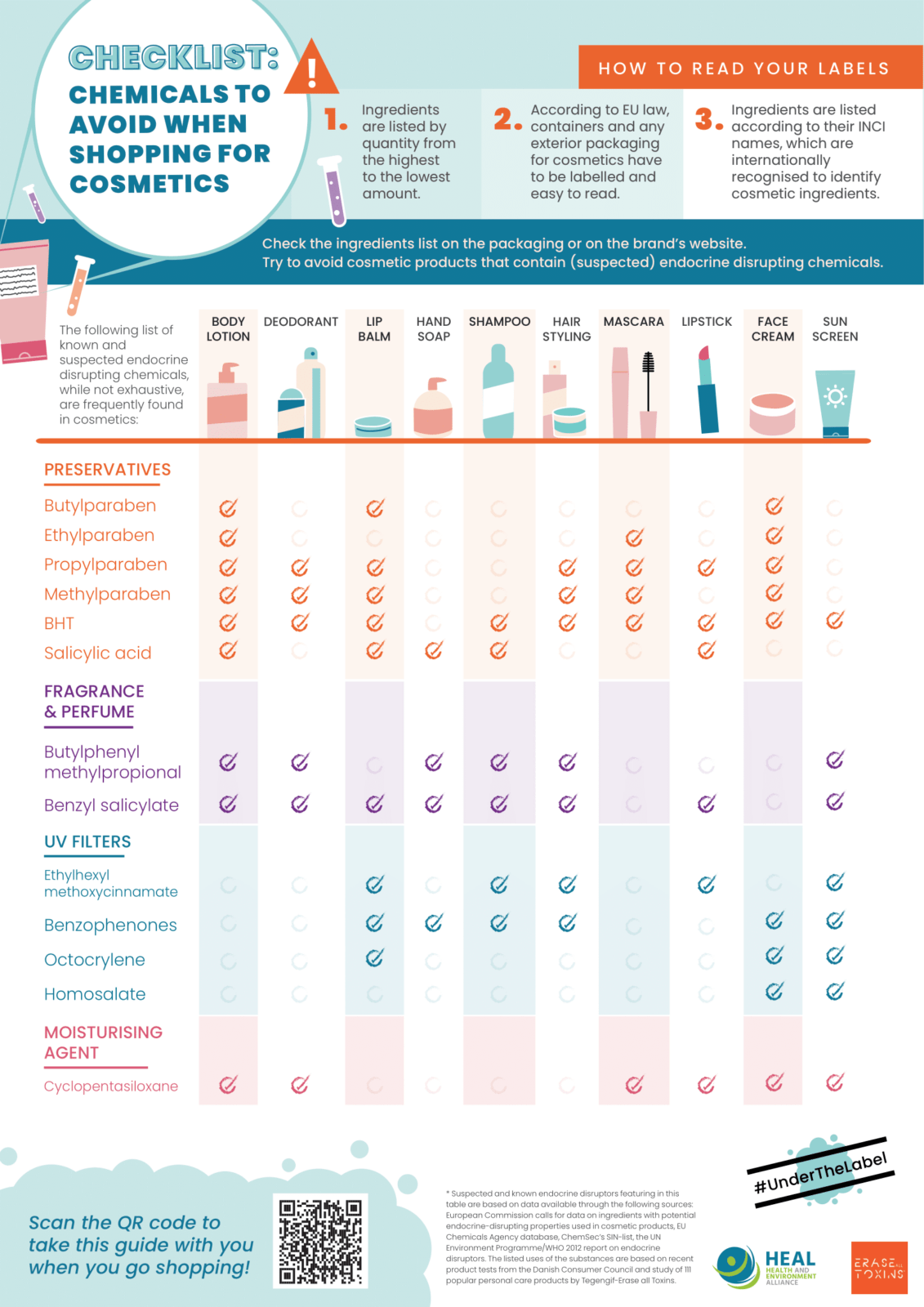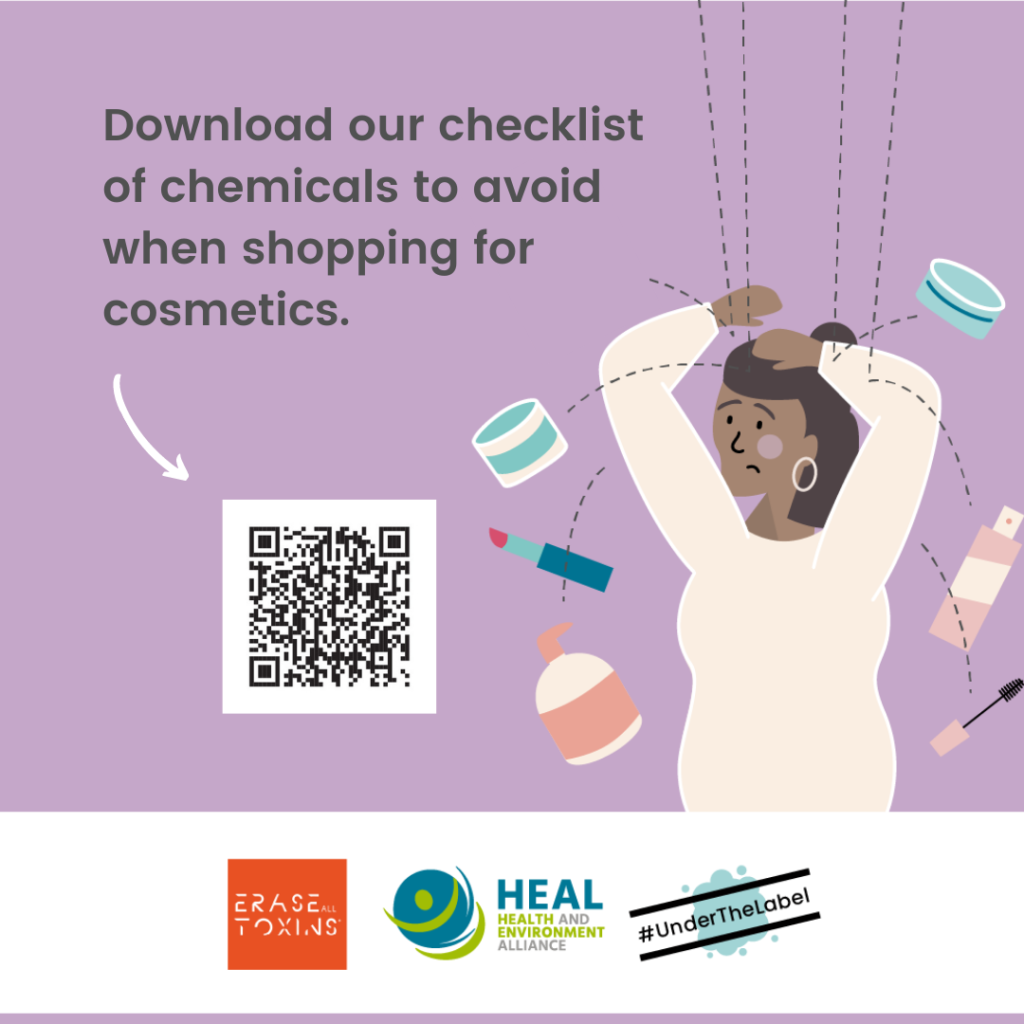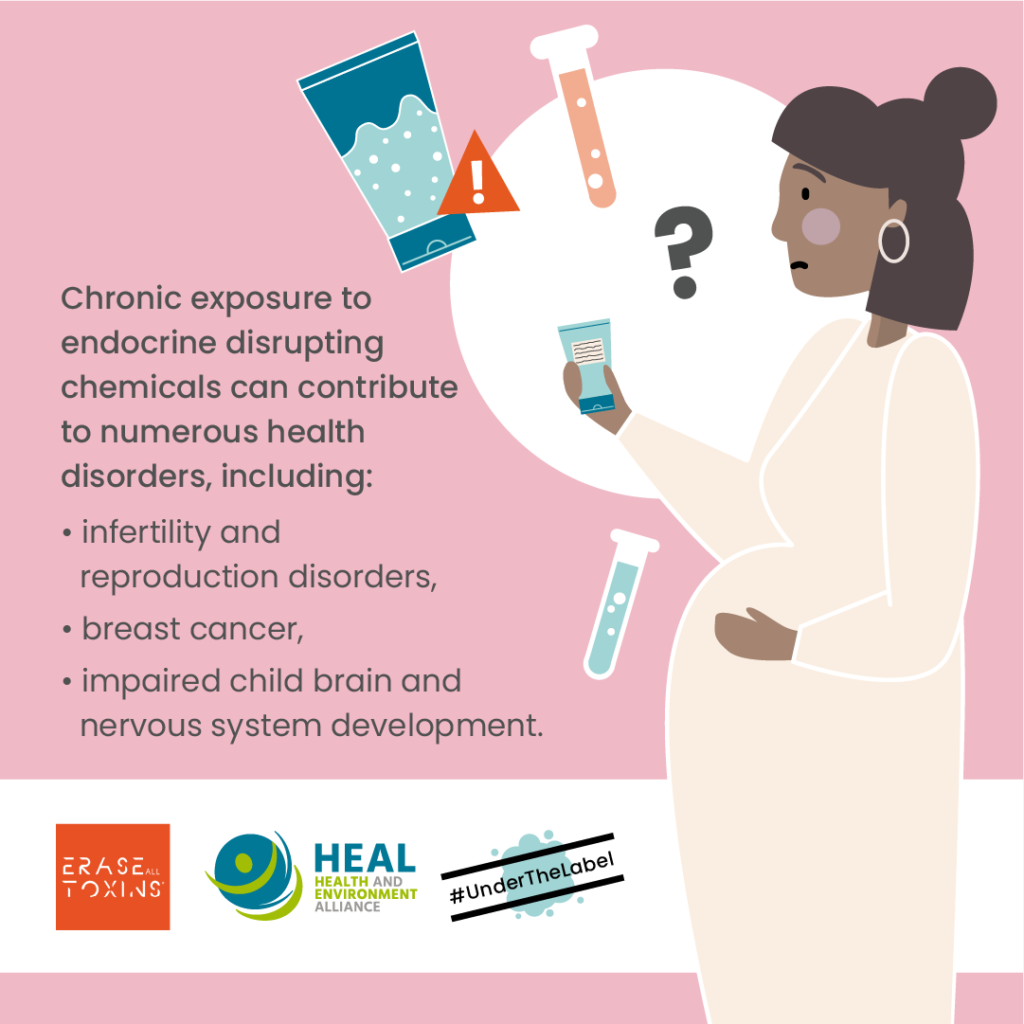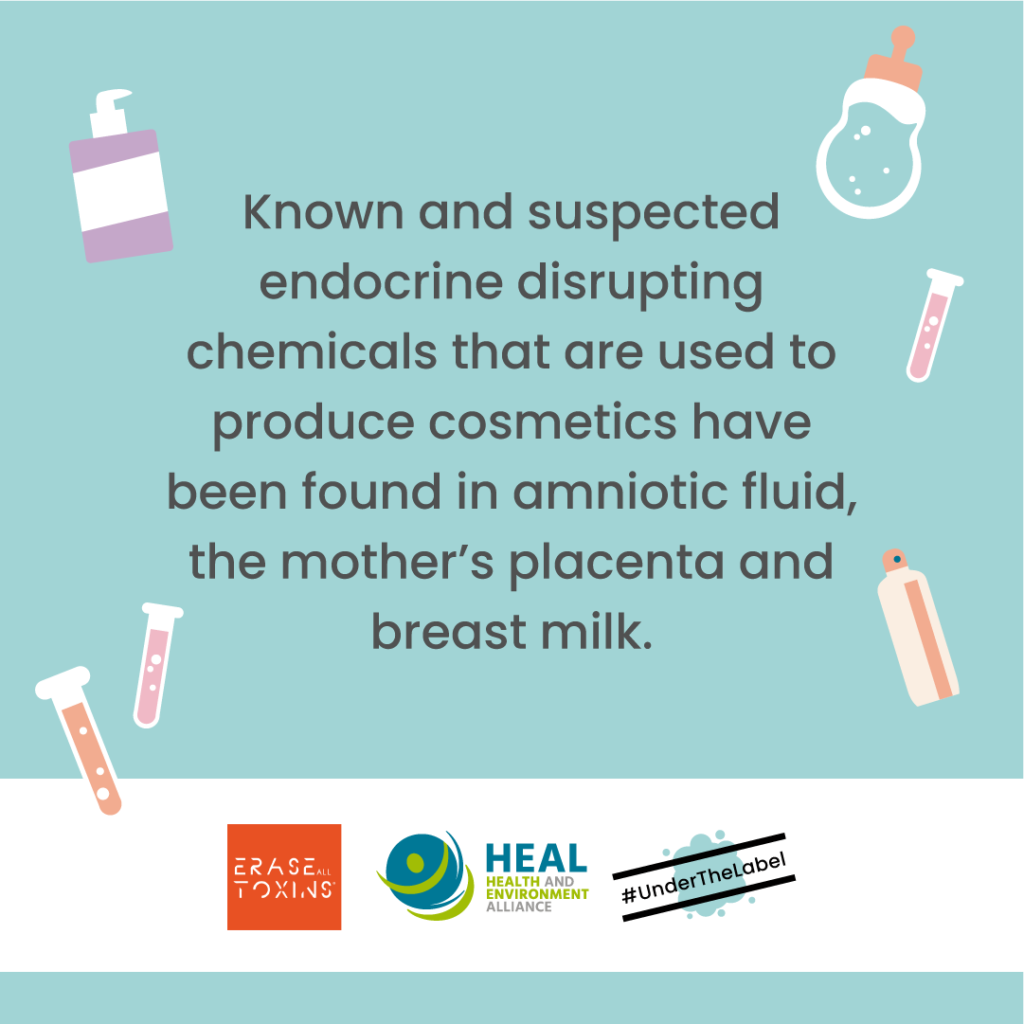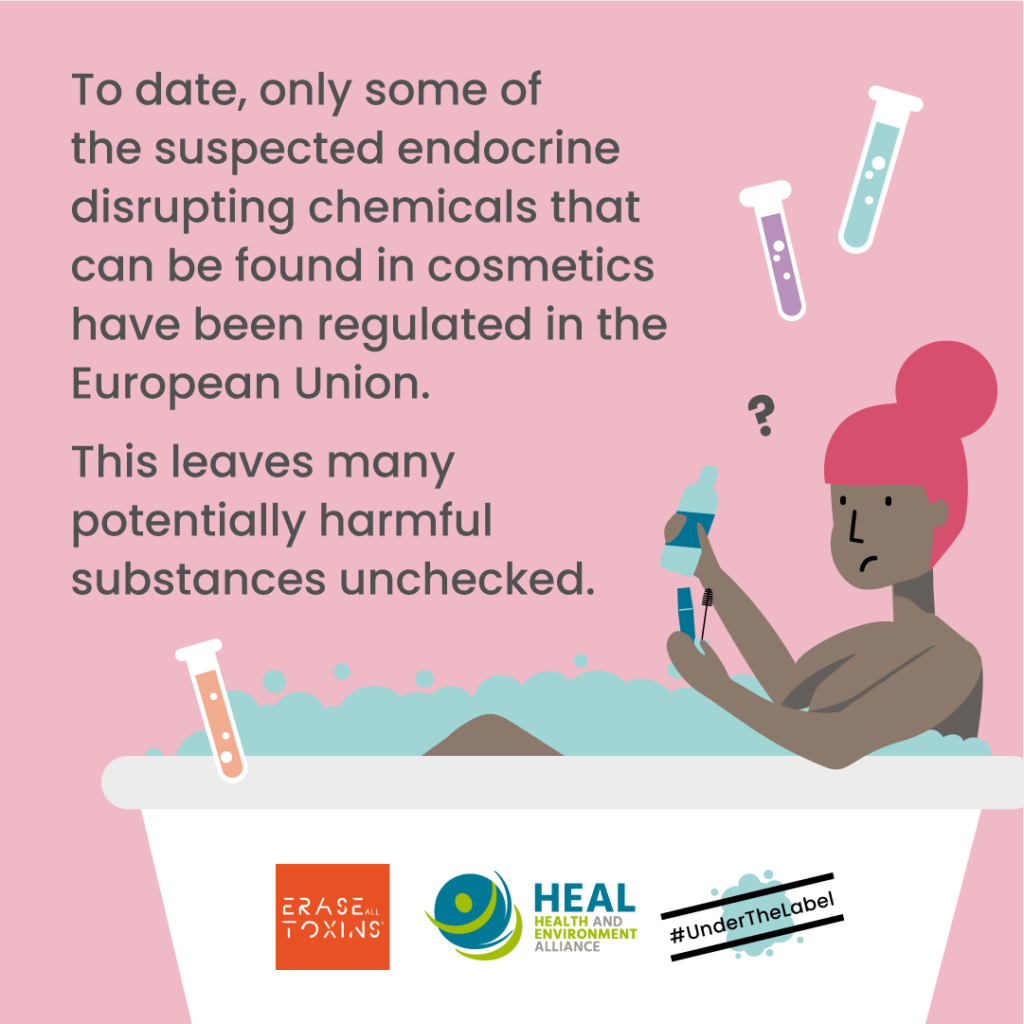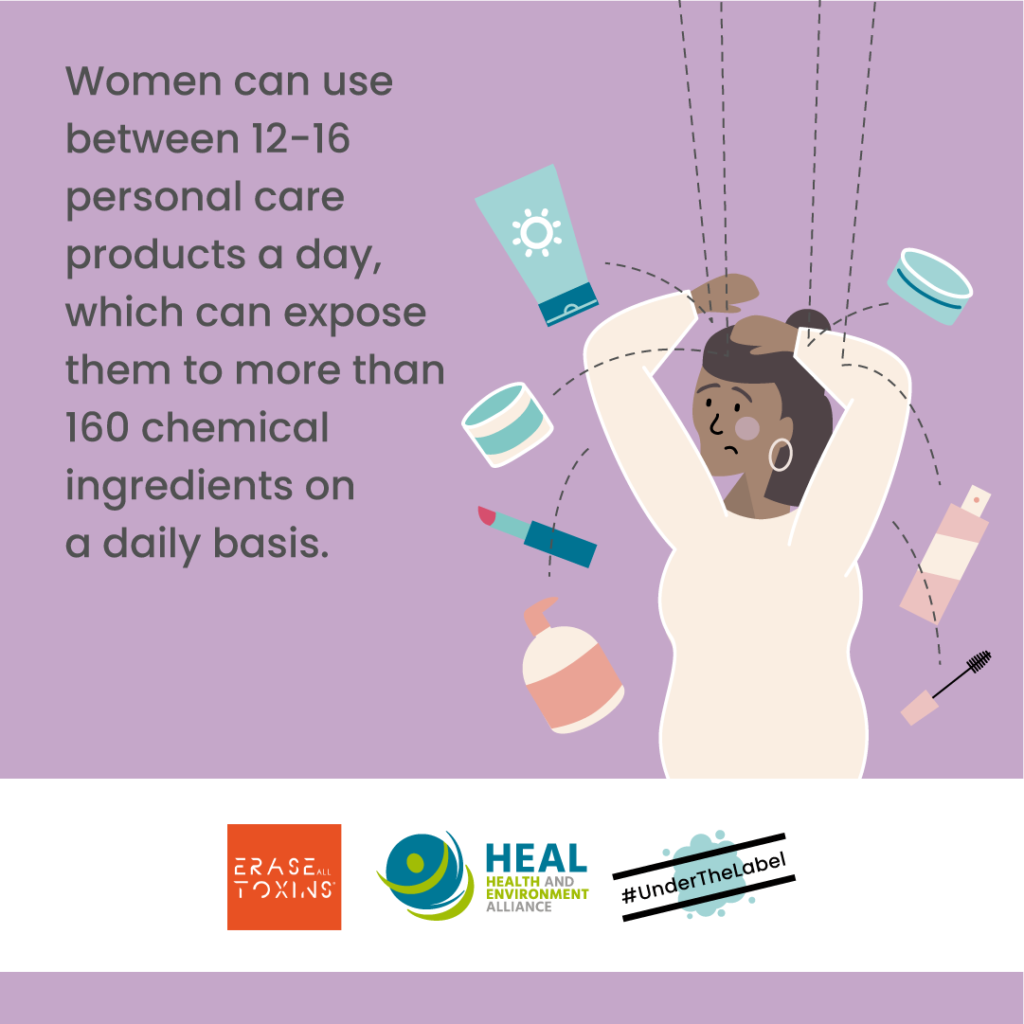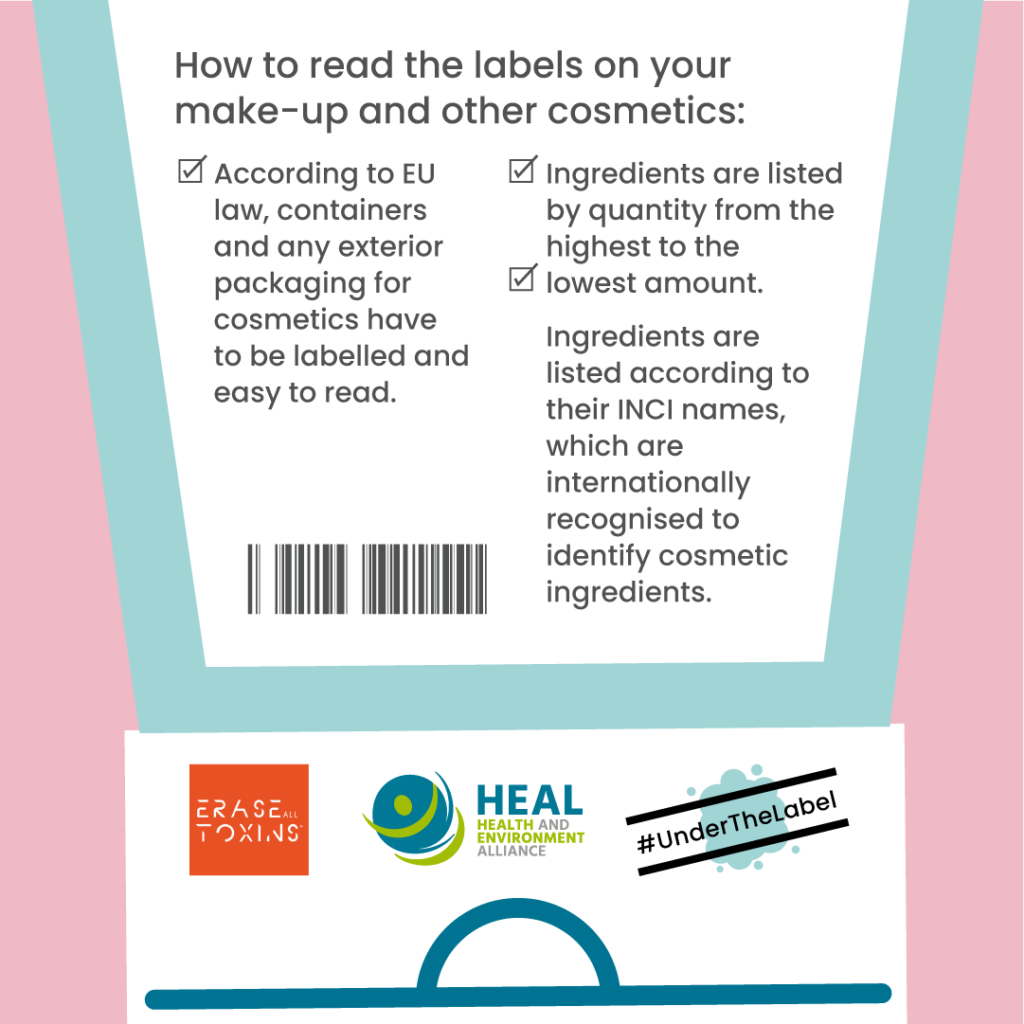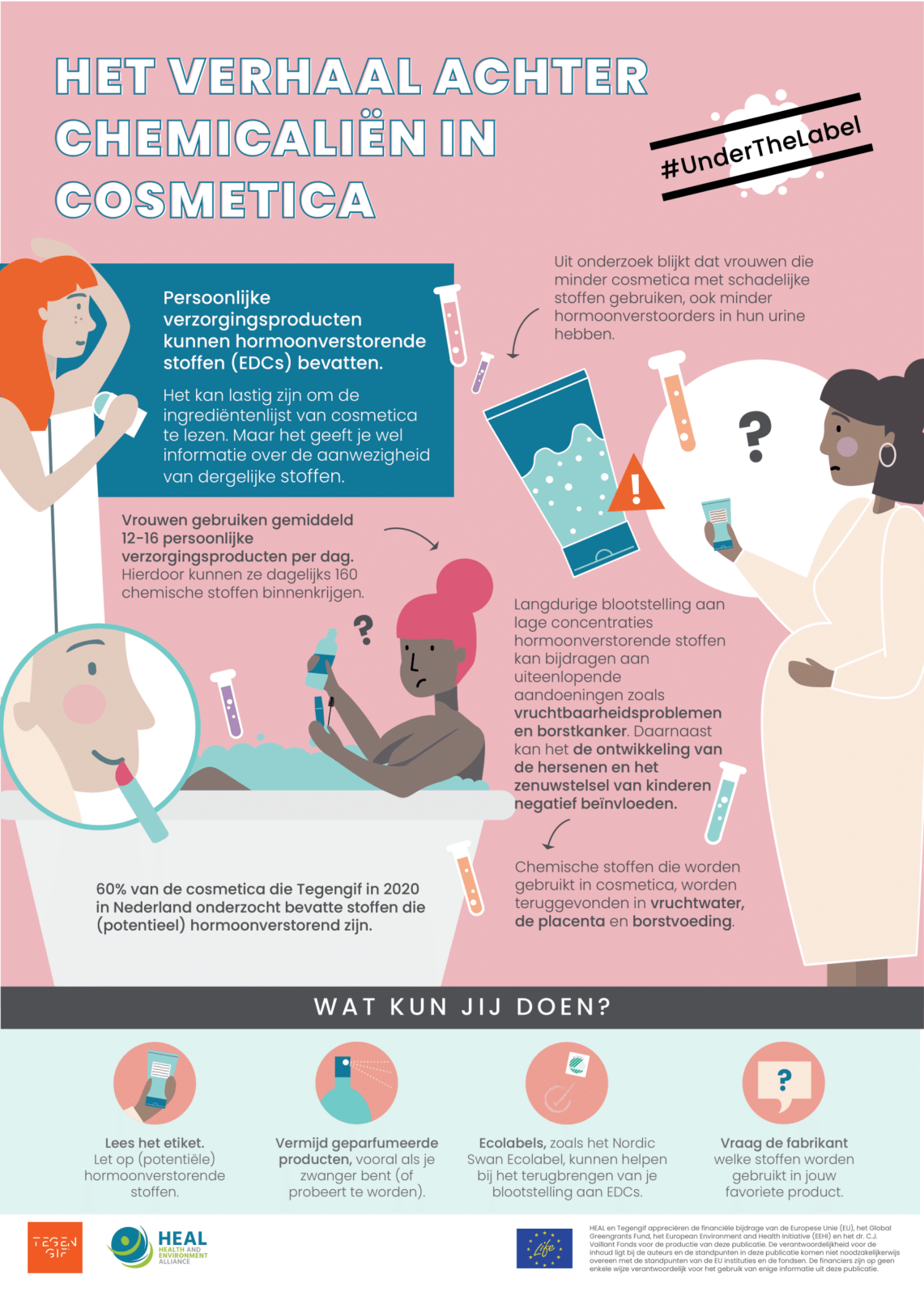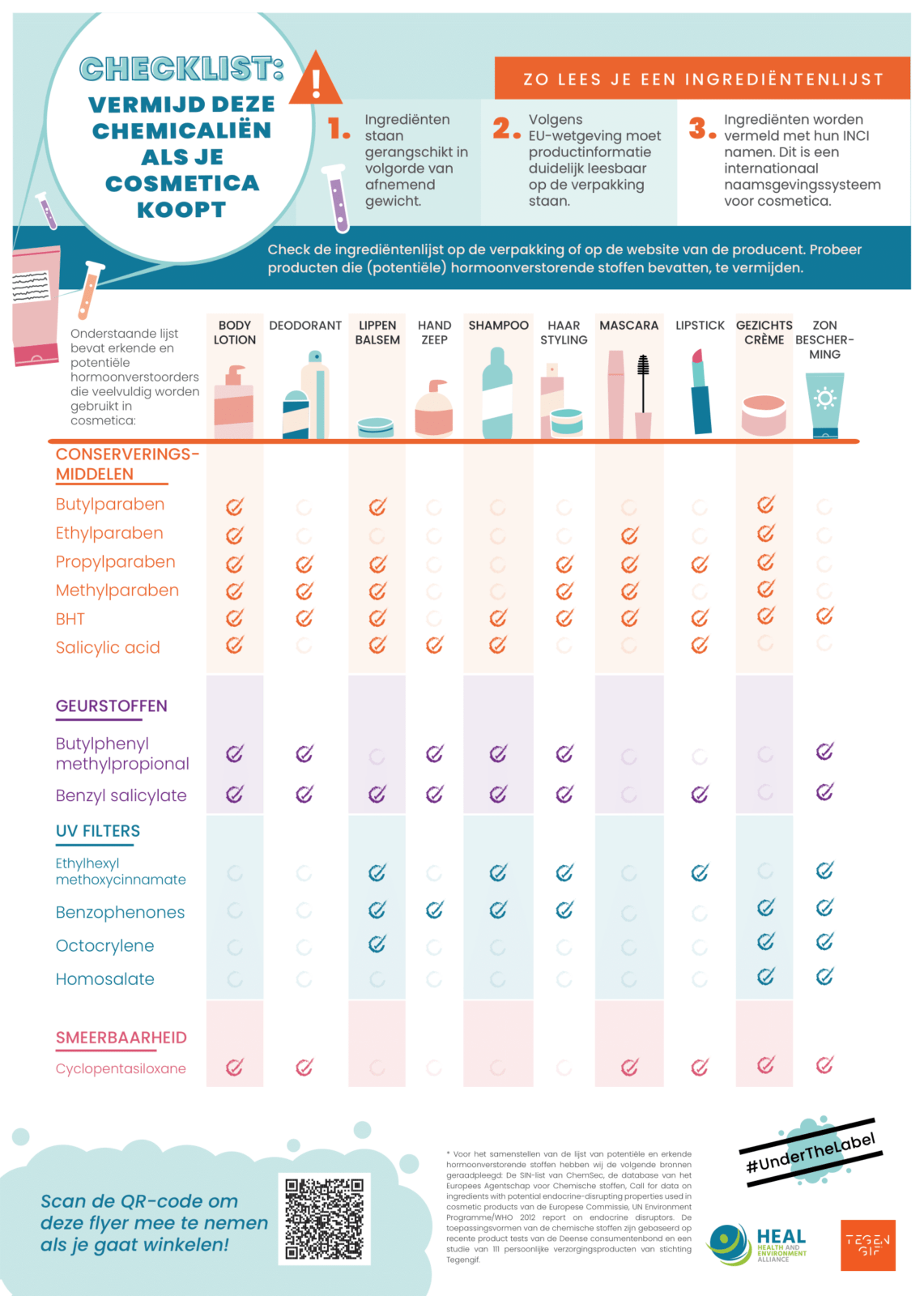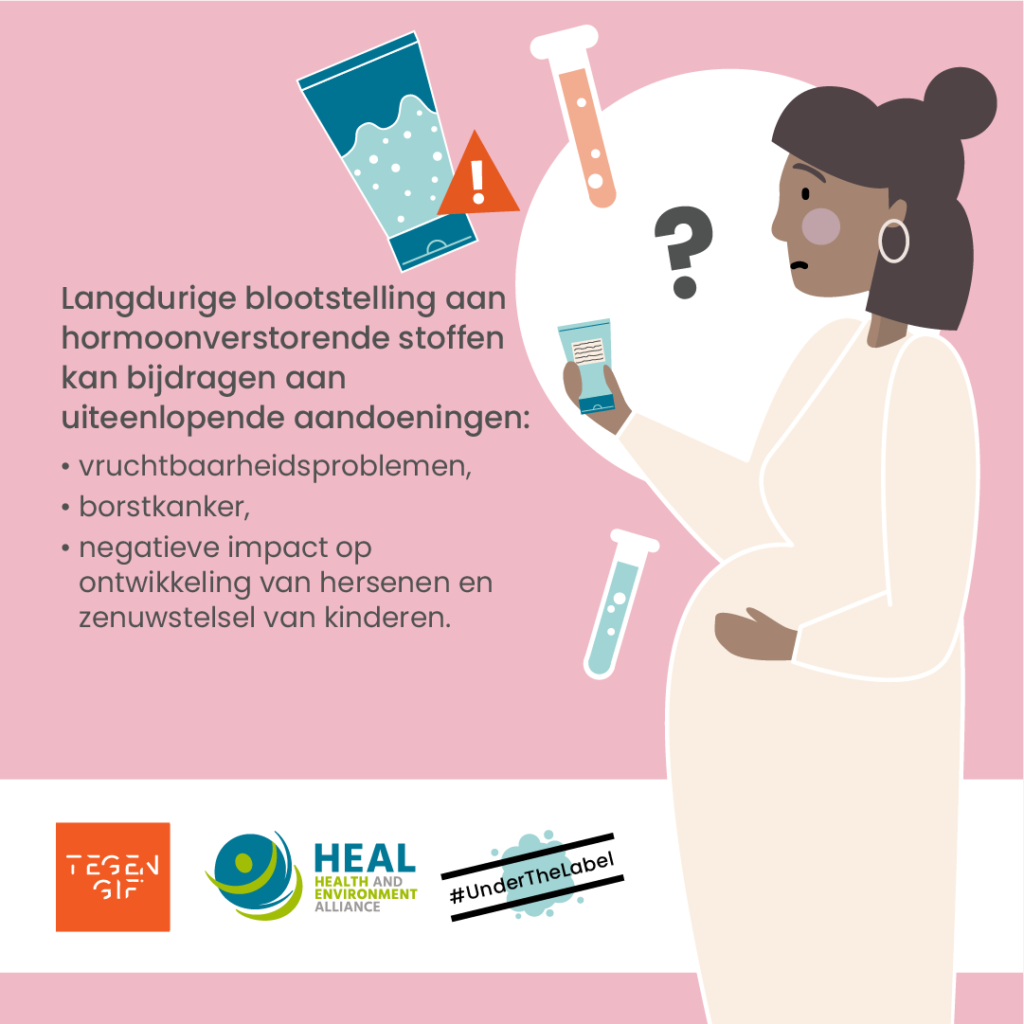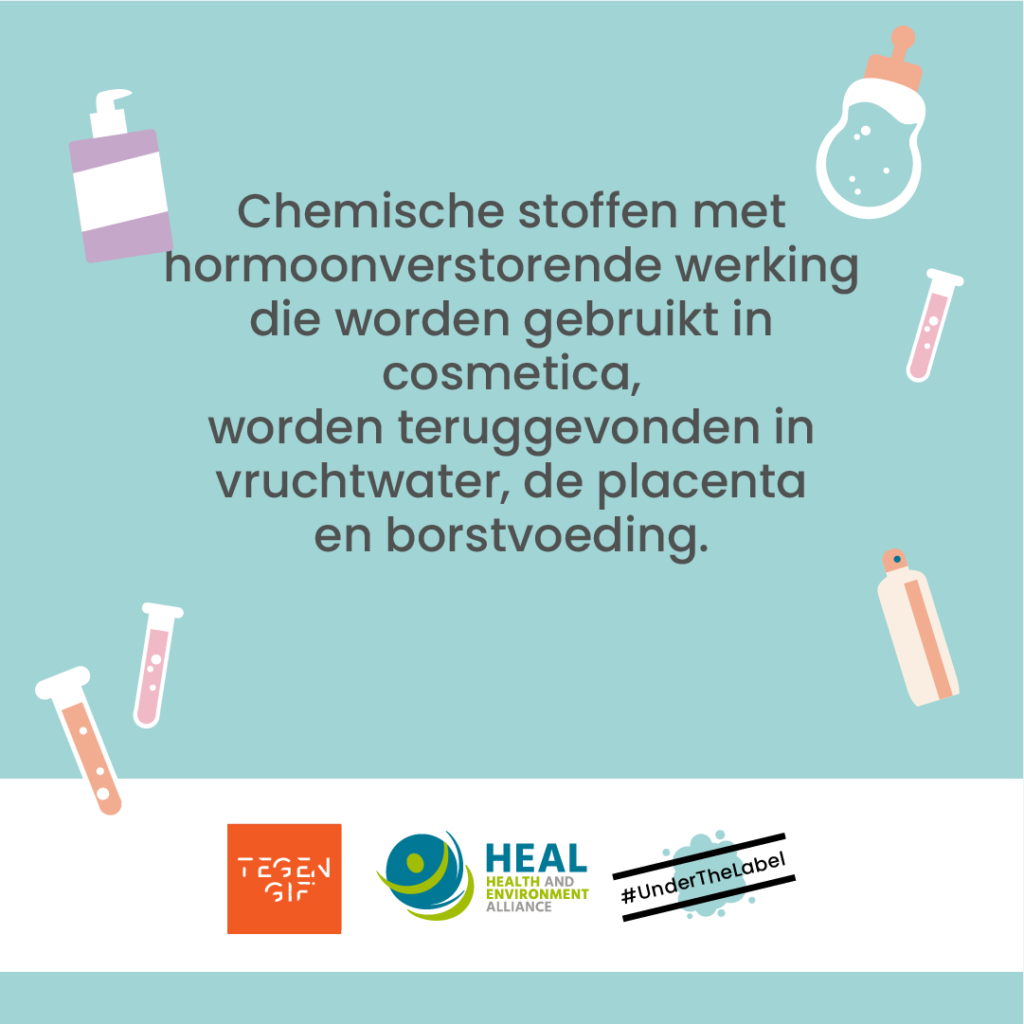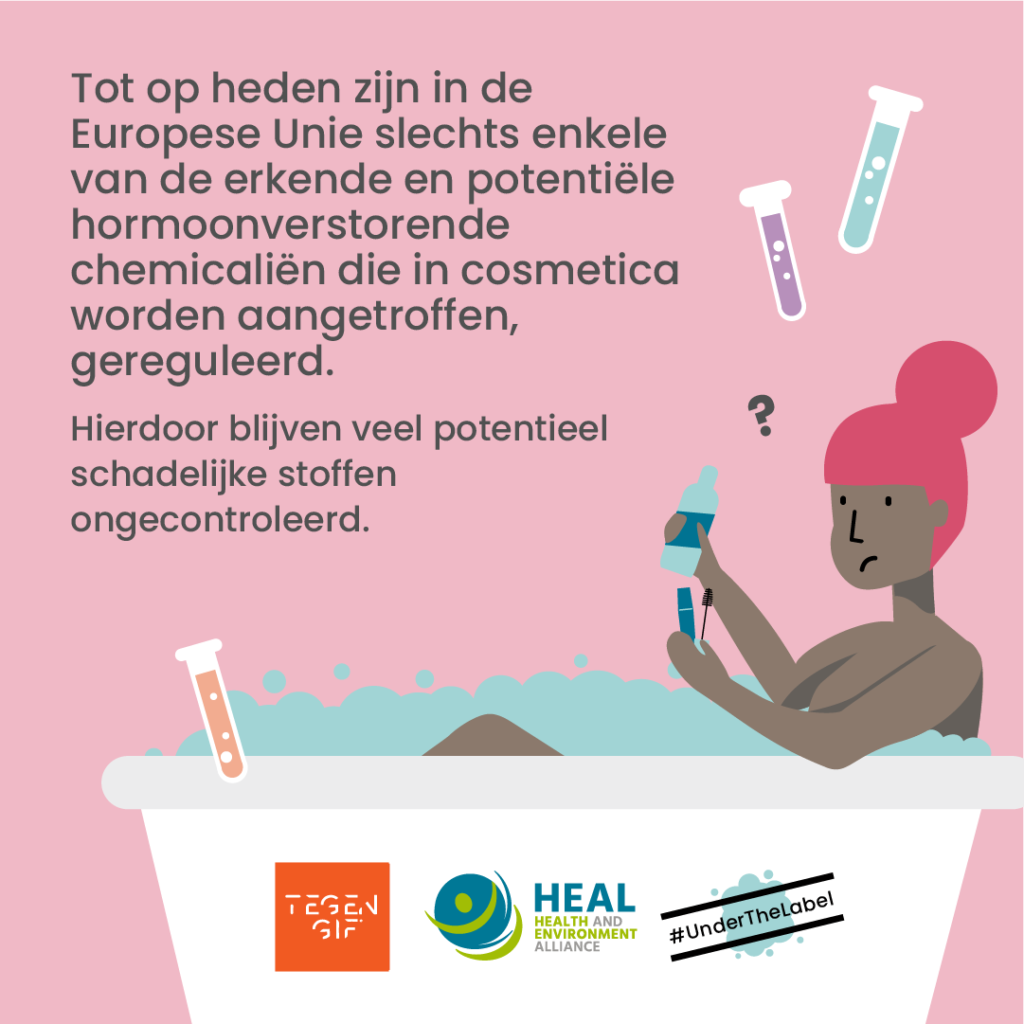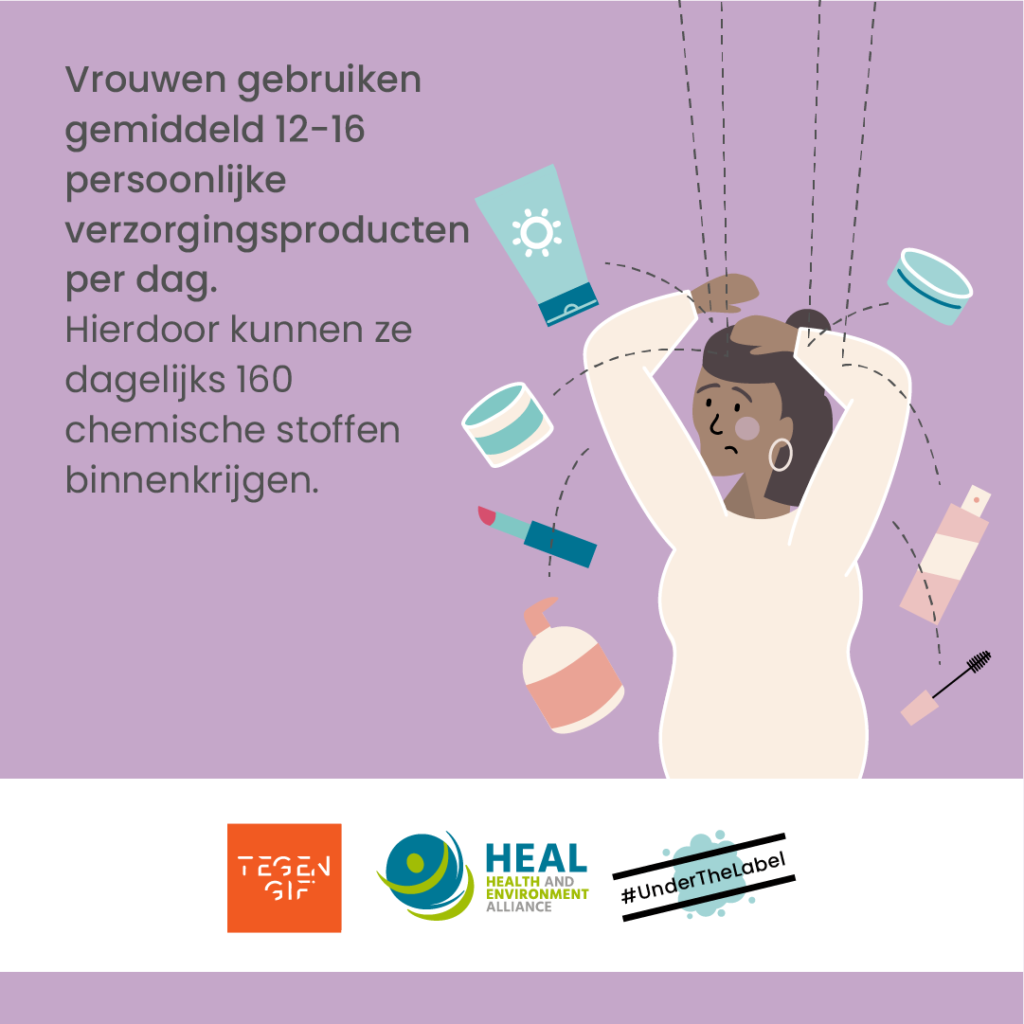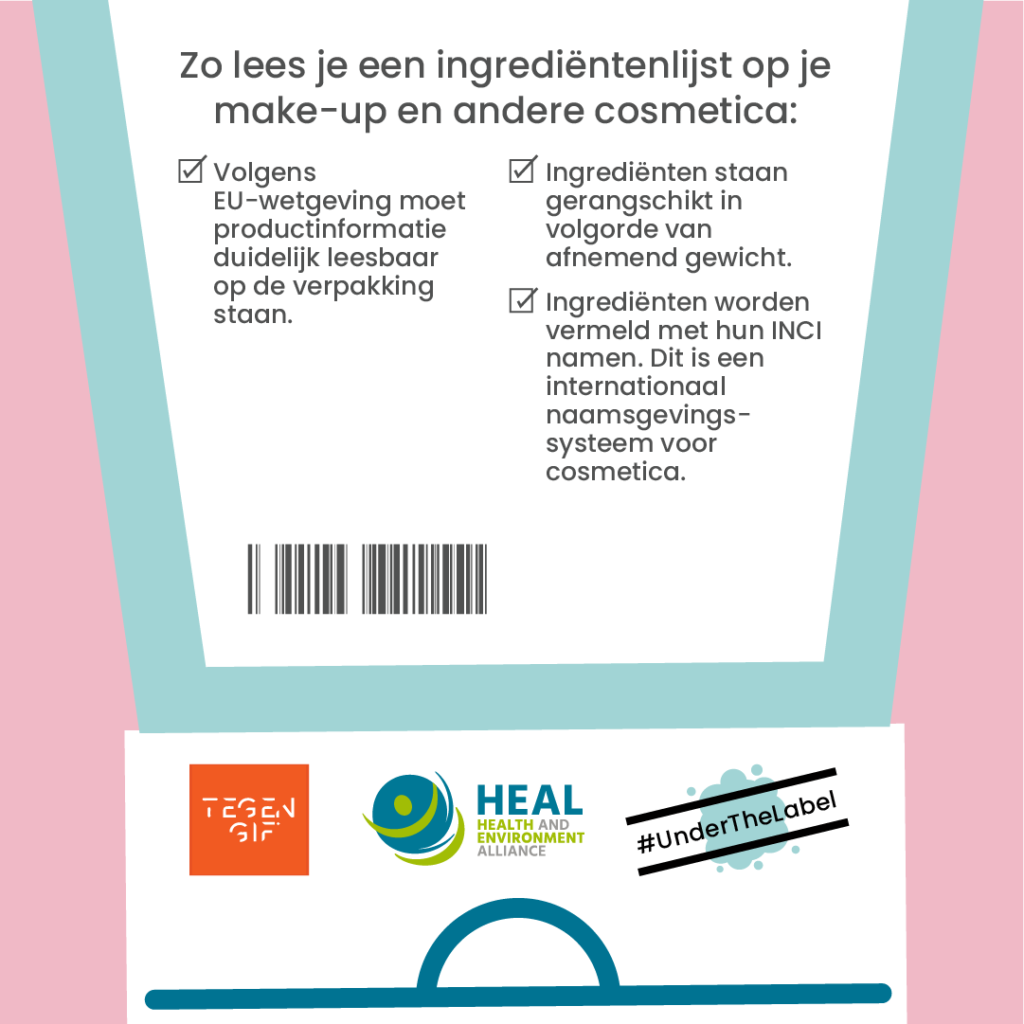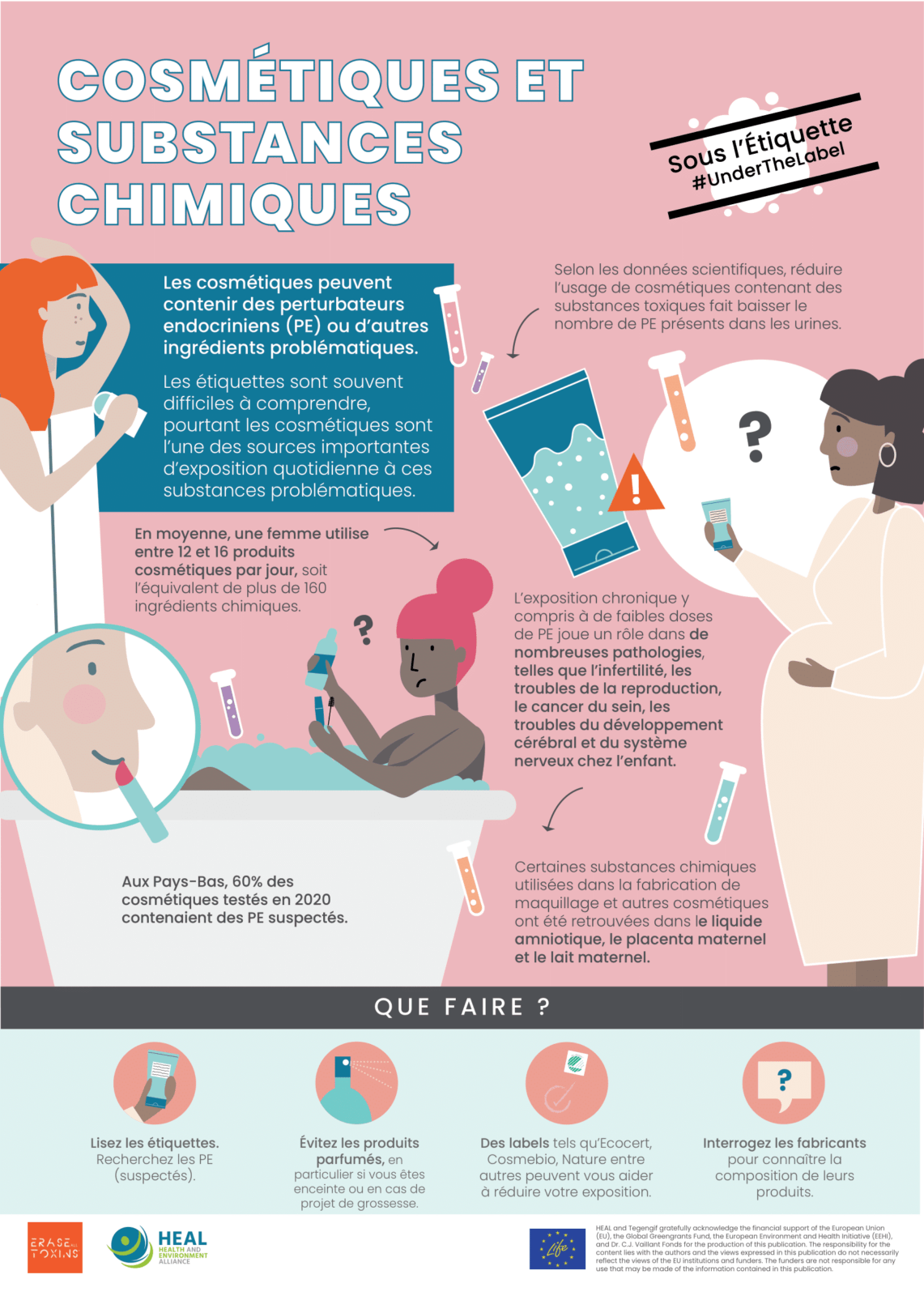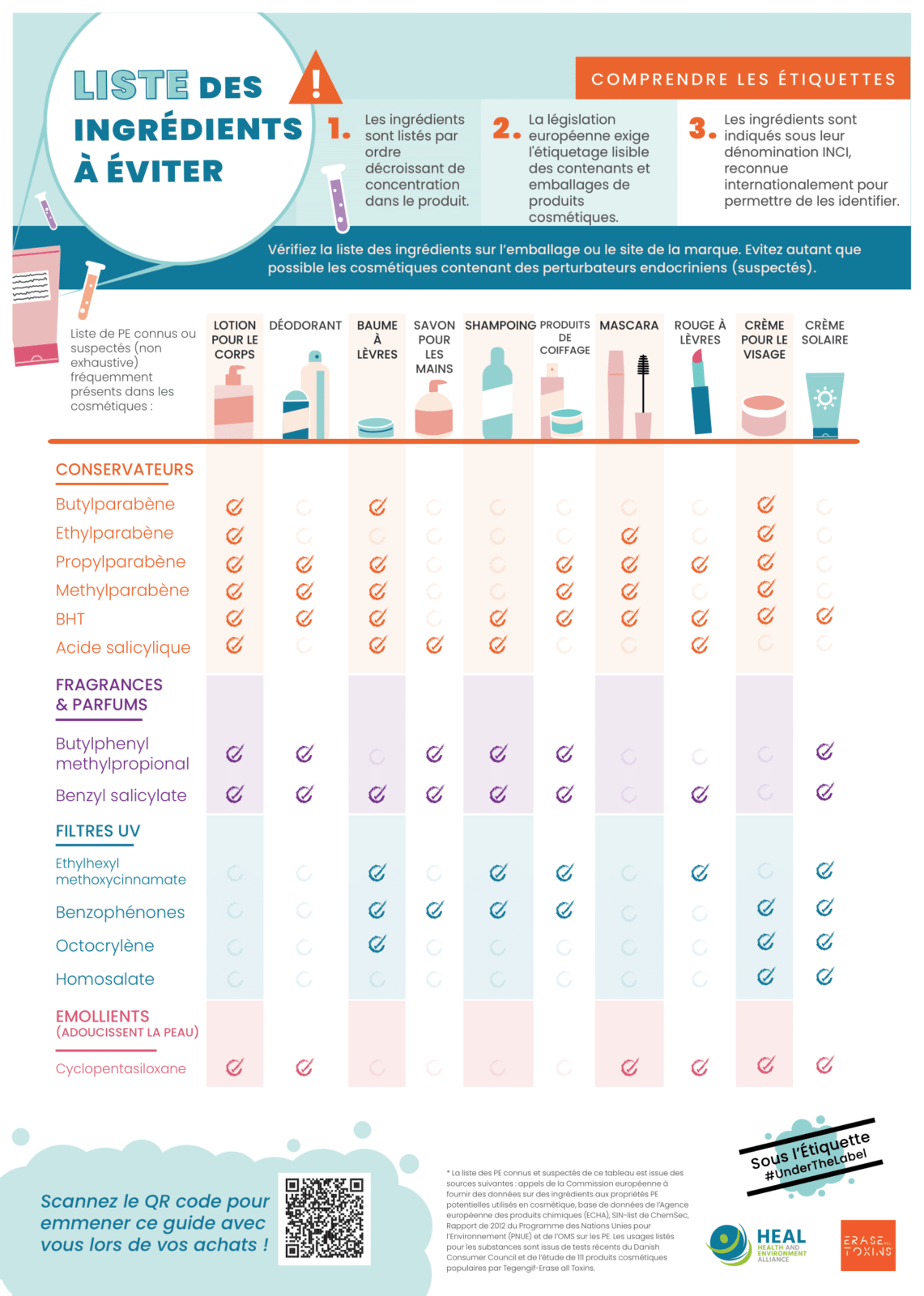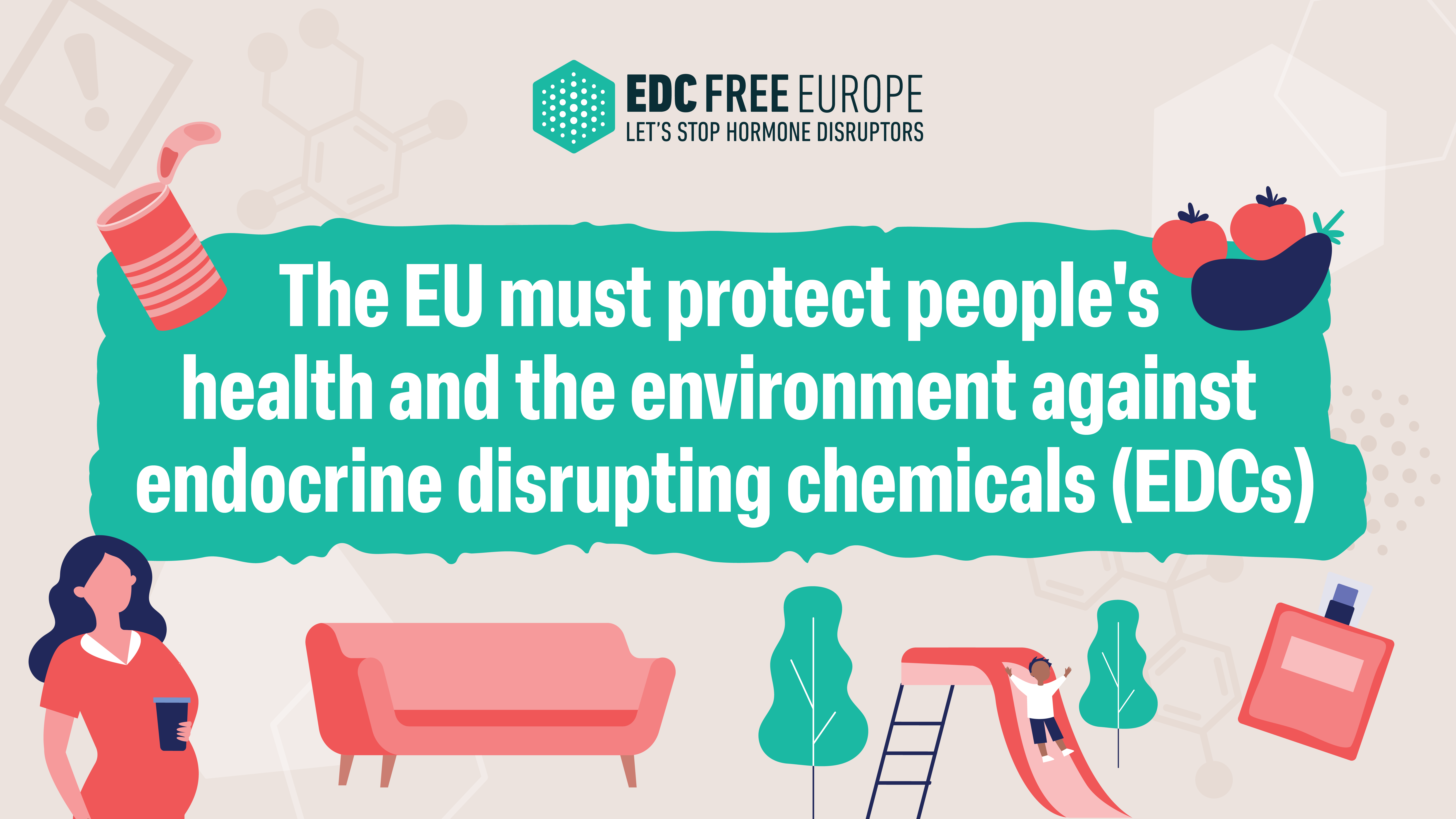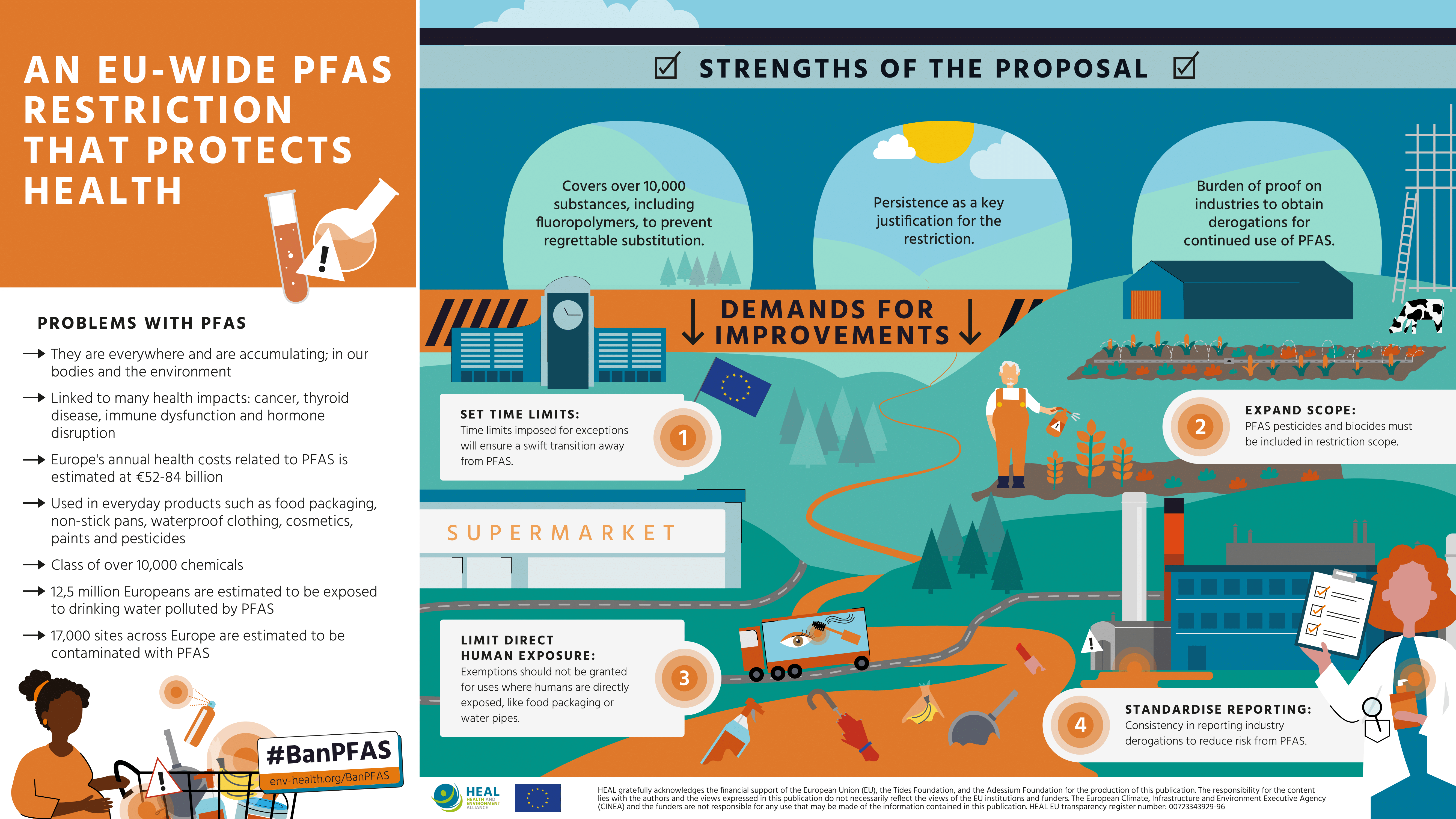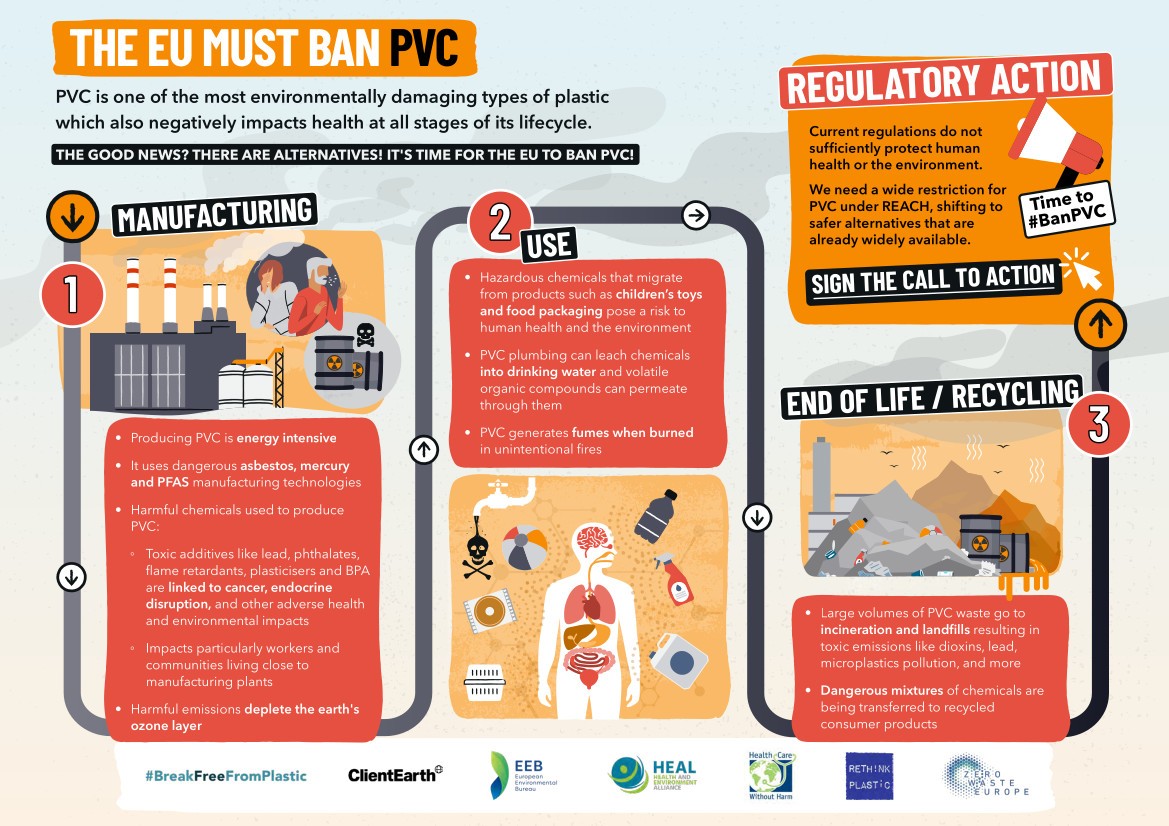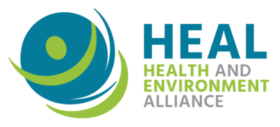The EDC-Free Europe coalition, of which HEAL is a member, has launched a new infographic illustrating the harmful impacts of exposure to known and suspected endocrine disruptors on our health and the environment.
21 July 2021
What’s that written on the label of your bottle of shampoo, deodorant or mascara? Cosmetics and personal care products can contain harmful endocrine disrupting chemicals (EDCs) and other substances of concern, but their labels can be hard to read. The infographic launched by the Health and Environment Alliance (HEAL) and Tegengif/Erase All Toxins today uncovers the story behind chemicals in cosmetics.
Download our infographic as a PDF.
Open your bathroom cupboard: how many cosmetics and personal care products can you count? Some of us can use many different products on a daily basis, some of which we even re-apply throughout the day. But these cosmetics can be a significant source of our daily exposure to harmful chemicals, especially known and potential endocrine disruptors.
In fact, a recent study found that women may use between 12 to 16 personal care products in one day, which can translate into exposure to more than 160 chemical ingredients a day.
When it comes to endocrine disrupting chemicals, research shows that chronic exposure to even low doses of such compounds can contribute to numerous health disorders, including infertility and reproduction disorders, breast cancer, and impaired child brain and nervous system development. This points to the urgent need to minimise exposure to endocrine disruptors, starting with daily consumer products such as cosmetics and personal care products.
The recent European Chemicals Strategy for Sustainability includes important commitments to reduce the production of and the related exposure to harmful chemicals and drive the transition towards safer alternatives, including to better identify and regulate endocrine disruptors. However, it will take years to implement those commitments. In the meantime, people remain exposed to harmful substances that continue to be available on the market, most of the time without even knowing it. That is why we believe it to be important to promote public awareness about our chemical intake and ways to partially influence it via the choices we make in what we purchase.
The new guide from Erase All Toxins and HEAL is at the heart of such efforts. It guides readers through the story behind chemicals in cosmetics, and offers a checklist of chemicals to avoid that consumers can take with them when shopping for cosmetics. Download the guide today in English and Dutch!
Download our social media assets:
Download our infographic as a PDF.
We thank our member WECF France for their support in translating this infographic.
